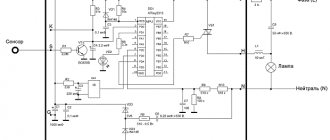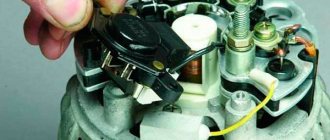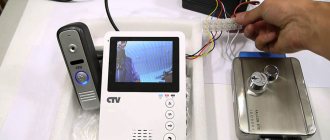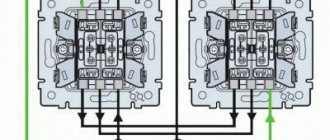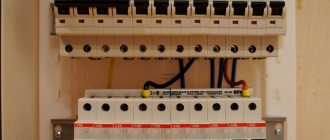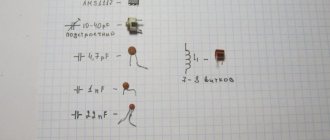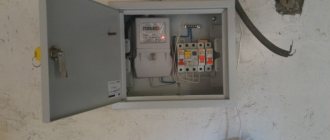HPS lamps are the oldest and most time-tested light sources. They continue to be actively used despite the fact that the lighting equipment market is actively filled with LED devices.
The popularity of sodium lamps is due to the fact that they emit an intense luminous flux with minimal power. They are actively used for street lighting and for growing plants in greenhouse conditions. However, due to the low quality of color rendering and strong flicker, HPS is not used for lighting residential buildings and industrial premises.
To connect the HPS, you need to purchase a special starting device (IZU), a ballast (electronic ballast, choke), and a capacitor. When the ignition device is started, a high voltage pulse is created and an arc is formed. IZU for HPS must be selected taking into account the lamp power (from 35 to 400 W). Ignition devices are of parallel or series type, that is, with two or three contacts. It is important to know which device is best suited for HPS and how to connect it correctly.
Advantages and disadvantages
If you can’t decide whether to buy HPS or LED lamps, then you need to consider the pros and cons of sodium devices.
Then you can weigh the pros and cons to make the right choice. The positive properties of sodium light sources include their high luminous efficiency, long service life, and low energy consumption. In addition, they have a high efficiency and are resistant to temperature changes.
However, HPS requires time to start (5 - 10 minutes), they have poor color rendering and distort colors, which cannot be said about LEDs. The disadvantages of the lighting element include frequent flickering of the lamp, which leads to eye fatigue.
The advantages and disadvantages of HPS lamps will be discussed in more detail below.
pros
Experts highlight the following positive characteristics of HPS lamps:
- Sodium light sources emit a powerful luminous flux (up to 160 Lm/W for high-pressure lamps, approximately 200 Lm/W for low-pressure modules). These figures are higher than other types of sodium devices and ice lamps.
- Long service life - from 10,000 to 30,000 hours. At the same time, the quality of lighting does not decrease.
- HPS consume a minimal amount of electricity, which consumers cannot help but rejoice at. According to this indicator, DNAT is ahead of DRL.
- Light sources operate correctly at temperatures from -60 to +40. The lamp starts even at low temperatures.
- The efficiency of the HPS lamp reaches 30%.
Depending on the level of internal pressure of saturated sodium vapor, HPS with high and low pressure is isolated. The former show higher indicators, and the latter – low.
A low pressure sodium lamp (LPNS) has all the advantages described above. It is used only for background lighting of streets, as it emits a pungent orange color.
High-pressure sodium lamps (HPS) have better color rendering, which allows them to be installed in gyms and industrial premises. In addition, the lighting element has high luminous efficiency with minimal voltage and a long service life. High pressure sodium lamps start up faster than low pressure sodium lamps.
Minuses
In addition to the positive characteristics, HPS lamps have negative properties:
- Low color rendering, especially for low pressure modules. They distort colors, which prevents their use in residential areas.
- Temperature limitation. Despite the characteristics declared by the manufacturer, the operating temperature of DNAT is in the range from -20 to +30°. If this condition is violated, the device will fail faster and the light output will decrease.
- Sensitivity to changes in electricity. Such light bulbs are recommended for use in networks with stable voltage. Although a high-quality throttle can correct this shortcoming.
- Long on time. After starting, the light glows weakly, maximum light output is observed after 5 - 10 minutes.
- Strong current ripples (up to 50Hz). For this reason, the device is not recommended for lighting homes and industrial premises. Frequent flickering tires the eyes.
HPS lamps contain toxic mercury, so they must be disposed of in a special way. A failed device must be taken to special organizations that deal with hazardous waste.
Characteristics and features of using HPS sodium lamps
DNAT consists of the following elements:
- Ceramic plug.
- A tube that allows light to pass through.
- Glass flask, which has high mechanical strength.
- Electrode.
- A metal rod through which gas is evacuated from the device.
- Barium rod.
- Base.
The burner is filled with sodium compounds, mercury vapor, and xenon. These gas-discharge substances are necessary to start the lamp.
Reference. There are two types of HPS light sources: low and high pressure. The former emit a muted yellow light, while the latter emit a light yellow light. High pressure devices do not distort color as much as low pressure HPS.
The burner is a cylinder-shaped tube made of aluminum oxide ceramic. Thanks to this material, the flask is resistant to sodium vapor and transmits up to 90% of light. Electrode elements are located on both edges of the tube.
The heat-resistant glass bulb is equipped with gaskets that prevent air from entering the lamp
It is important to maintain a vacuum inside, since the burner can reach a temperature of 1300°; if air enters, the integrity of the lamp is compromised
When an IZU is connected, a high voltage pulse is created, an electric charge occurs, and an arc is formed. Due to the need to preheat the sodium, the lamp lights up gradually. Low-power light sources emit full luminous flux after 5 minutes, and higher-power devices - after 10 minutes. This time is needed to warm up the burner.
It will not be possible to launch metal halide and sodium devices without the use of IZU. This device generates voltage in the lamp to form an arc. However, during startup it is cold, and a sharp increase in current can destroy it. To avoid this, you need to use electromagnetic ballast.
HPS with a built-in pulse ignition device is available for sale.
Connect the sodium lamp to the network using a type E (Edison) socket. For light sources with a power of 50, 70, 100 W, an E27 holder is used, and for HPS lighting devices with a power of 150, 250, 400 W - E40. The number in the marking indicates the diameter of the detachable connector (mm).
Experts highlight the following characteristics and features of sodium lamps of the HPS type:
- The color rendering coefficient of devices is very low, so they emit acrid yellow light and distort colors. In addition, they have a high pulsation, that is, they blink frequently. This leads to a decrease in visual performance, attention, and rapid fatigue. This is why HPS is not used to illuminate homes and workplaces.
- The light output level of sodium lamps is high (from 100 Lm/W). Therefore, they are often used for street lighting. However, over time, the level of light output decreases.
- The operating life of these light sources is approximately 10,000 hours. However, the lamp will work for so long only if the basic operating rules are observed: temperature from -30 to +40°, use of a high-quality IZU, as well as a choke.
- Due to its long ignition time, HPS is not suitable for lighting systems that require frequent switching on/off, such as motion sensors.
- HPS lamps consume a small amount of electricity compared to other sodium lamps and have a high efficiency (approximately 30%).
- Sodium devices are suitable for use in bad weather conditions (snow, rain, fog, dust). Negative factors do not affect the luminous flux.
The choice of the scope of application of lighting elements depends on their power. For example, light sources of 70 - 400 W are used in greenhouses for plants and flower beds. For greenhouses, 150 or 250 W bulbs are more suitable. If you use HPS with a power of 400W, then make sure that there is a gap of at least 50 cm between the plant and the light source, otherwise it may burn.
Lighting elements of 70, 150 W are installed in street lamps, for lighting tunnels, and gyms.
When choosing HPS for outdoor use, use lamps with housing protection from moisture of at least IP-65.
It is not worth installing sodium light sources in home lamps or at work sites, as they have a bad effect on vision and distort color.
Application area
Typically, this type of gas-discharge lamps is used in cases where economic indicators are more important, rather than accurate color rendition. This is the generally accepted opinion. For this reason, HPS is not suitable for lighting residential premises and industrial workshops. Such lighting is dangerous, as the risk of injury increases significantly.
Quite often, these light sources are used not only for street and greenhouse lighting, but also for illuminating architectural complexes and monuments. In Moscow, their use is traditional. Notice the yellowish-orange lighting in the center of the metropolis. Now some manufacturers are improving these lamps, and they have already achieved acceptable color rendering indicators (Ra index). The maximum demand is for powers of 250 and 400 W.
Not long ago, a new generation of low-power sodium lamps with Ra=80 appeared. This is quite close to the spectrum of incandescent lamps, i.e. it can be used for lighting decoration in public places.
Many gardeners recommend using NLVD precisely in the last phases of seedling growth. In modifications intended for greenhouse use in the luminescence spectrum, additives have appeared for the blue part of the spectral composition of light. In the early stages, such lighting contributes to the fact that the shoots begin to grow vigorously, and the stems quickly lengthen. When using HPS lamps in agriculture, they should be handled with extreme care, since a broken or exploded bulb will ruin the harvest.
They are also used in landscape design. Their glow can imitate an open fire or the color of the sun during sunset.
Why is it necessary?
DNAT lamps are old and time-tested light sources that emit intense light at a minimum power level. They are actively used in street and greenhouse lighting. Due to insufficient color rendering and strong flickering, they are not used in lighting living rooms.
IZU for DNAT
To connect the DNAT, you need to use a special IZU triggering device with a ballast and a capacitor. The first is required to create a high voltage pulse and form an arc. At the same time, it must be selected taking into account the power of the light source up to 400 watts.
Increasing the DNA voltage as a function of the IZU
IZU connection diagram: specific diagrams
Depending on the number of contacts, pulse ignition devices are connected either in series or in parallel. The connection diagram is usually indicated on the product body.
General connection diagrams
Connecting a two-pin IZU
Two-pin devices are used for lamps whose ignition voltage is less than 2 kV. These are mainly low-power metal halide and sodium arc light sources. Connection diagram: parallel.
Connection diagram for a two-pin IZU
The current going to the lamp does not pass through the protective device. However, high-frequency pulses generated for ignition affect the ballast and can lead to its breakdown. Therefore, when connecting in parallel, it is necessary to use chokes with insulation resistant to high voltages (2-5 kV).
Connecting a three-pin IZU
Three-contact devices are gradually replacing two-contact devices. They are connected in series. A device with a serial connection is more reliable: breakdown to the ballast is eliminated. Connecting a protective device to a light source can be divided into several stages:
- connect one negative wire from the electrical panel to the same type of IZU terminal, and the second to the lamp;
- open the phase wire, insert it into the ballast, and the ballast contact into terminal “B” of the IZU;
- The middle wire is connected to the light source socket.
Let's look at specific connection diagrams.
IZU-T is characterized by small dimensions (diameter 35 mm by 50 mm), standard fastening and built-in timer (not available in all models). Designed to work together with magnetic ballast and HPS and DRI lamps with power up to 1000 W (220 V) and up to 2000 W (380 V). The design of models with a timer allows the ballast to remain in good condition longer, re-ignite the light source during a short-term power outage, and reduces the likelihood of breakdown of the magnetic ballast.
IZU-T connection diagram
IZU-250-1000 W are used for ignition of DNAT, DRI and MGL. Size: 60×78 mm. Recommended for use with electromagnetic ballast. Protection degree IP20.
Connection diagram for IZU-250
IZU-1M are used to turn on HPS with a power of 100 to 400 W and DRI with a power of 35 to 400 W. Operates in a wide temperature range: from -45⁰ to +70⁰С. Overall dimensions: 32×27×30 mm.
Connection diagram IZU-1M
Common connection errors
- Using equipment not designed for this type of lamp. Each type and power of light sources has its own type of additional equipment. Using mismatched types will damage the light source.
- The same applies to power: all additional devices must be suitable for the power of the light source.
- Installing a gas discharge light source with bare hands. The sebum will turn into black spots, which may cause the lamp to break or explode. Use gloves or wipe the flask with alcohol before use.
- Failure to comply with the electrical diagram. Usually the connection diagram is on the case. It must be strictly followed.
What are pulse ignition devices (IZU) for?
IZDs help increase the voltage to such an extent that an arc is formed. The power of the ignition device ranges from 35 to 400 W. In addition, the device may have 2 or 3 outputs, so the circuit for switching on the HPS when using different types of IZU is slightly different.
Important! Experts advise using three-pin pulse ignition devices for HPS.
When connecting a lighting device, it is recommended to use a capacitor.
The circuits where the inductor is installed consume reactive power in addition to active power. The second does not provide any benefit and increases losses. To avoid this, add a phase-compensating capacitor to the connection kit.
The following table will help you select a capacitor with a suitable capacitance depending on the power of the lamp and ballast:
This device will not help save electricity, but it will reduce the load on the wiring and reduce the likelihood of it catching fire.
Operating principle and connection diagram of a HPS lamp
An arc discharge is maintained inside the torch. For its appearance, IZU is used. This abbreviation stands for pulse ignition device. When the circuit is turned on, the lamp receives a pulse from 2 to 5 kV. It is needed to start the lamp - electrical breakdown of the burner and the formation of an arc discharge. The ignition voltage is significantly higher than the combustion voltage. Typically, three to five minutes of energy are spent to heat up the burner. At this moment the brightness is still low. Returning to normal operating mode takes no more than 10-12 minutes, while the brightness increases and normalizes. In the diagram, L is phase (line), N is zero.
The circuit contains an IZU and an inductor as a ballast element. Usually the connection diagram is present on the body of the throttle and/or pulse ignition device.
Sometimes a non-polar capacitor may be added to the circuit. Typically a capacitance of 18-40 µF is used. It is not necessary; adding it will not make the lamp shine brighter. Its task is phase compensation. The fact is that the circuit consumes active and reactive power, since there is a choke. There is no benefit from the reactive component, but the harm is obvious - interference in the power supply and reduced energy efficiency. However, adding capacitance to an electrical circuit will not improve energy efficiency. Adding a capacitor will somewhat reduce inrush currents and prevent irreversible degradation of the electrodes.
The capacitor used is selected based on the power of the lamp. Recommendations are presented in the table.
| HPS lamps | |
| Lamp power, W | Parallel connected capacitor 250 V, µF |
| DNAT-70 1.0A | 10 µF |
| DNAT-100 1.2A | 15-20 µF |
| DNAT-150 1.8A | 20-25 uF |
| DNAT-250 3A | 35 µF |
| DNAT-400 4.4A | 45 µF |
| DNAT-1000 8.2A | 150-160 uF |
When assembling a lamp using HPS lamps yourself, it is not advisable to use a wire longer than one meter between the socket and the igniter.
NLVDs are very sensitive to the quality of the power supply. When the voltage drops by 5-10 percent, the luminous flux can drop by a third. Increased voltage significantly reduces service life.
The IZUs for dnat (pulse ignition devices) themselves can have either two or three contacts. There's no difference. Not one of these options is worse or better than the other - both provide the same operating conditions for the lamp.
There is also a type of lamps that do not require an IZU. This is DNAS. They can be recognized by the starting antenna near the burner. It is usually made from one or two turns of wire that wraps around the burner.
Technical parameters of the IZU
When buying a pulse ignition device, you need to know the value of the maximum permissible current, the maximum frequency pulse voltage, voltage, automatic shutdown function of the device and the maximum cable length. The permissible current should not exceed twice the operating current, the maximum frequency pulse voltage should not be up to 3.5 kilowatts at the output. In the event of a device failure, the pulse ignition device must have an automatic shutdown function. The maximum cable length should be about 2-3 meters.
Specifications
Disposal conditions
The burners of high-pressure sodium lamps contain sodium amalgam, an alloy of sodium and mercury. It is strictly forbidden to throw HPS into containers with regular household waste or bury it in the nearest vacant lot. Disposal of devices is carried out according to the same rules that are adopted for DRL lamps and other devices containing mercury.
High pressure sodium arc lamps have very good technical characteristics. In terms of energy efficiency and service life, they compete with LED light sources, so people will continue to use them in various spheres of life for a long time.
Gas-discharge arc sodium lamp DNaT is used to illuminate large areas, city streets, and greenhouses.
Do not confuse low and high pressure sodium lamps. They have different designs and operating principles.
The emission spectrum of both is dominated by orange light. For low-pressure products, the radiation is almost monochrome; they shine with a bright golden light.
If they are used for lighting in rooms, the colors will be practically indistinguishable.
In high-pressure lamps the spectrum is more diverse.
In those models that are used in greenhouses for growing plants, a little blue light is specially added to the light spectrum.
The kit for connecting a high-pressure lamp includes several components, without which you simply cannot start it. That is, simply by applying 220 volts to it, it will not light up.
To do this, you need a special device - a choke or ballast, which in turn is connected according to a certain circuit.
This diagram is often depicted directly on the body.
Here is a more detailed drawing of it.
Painted on it:
- the inductor itself (ballast), to which the phase is supplied
- then this phase is supplied to the pulse ignition device - IZU
Through it you can connect instances of different power, from 70 to 400W.
The IZU creates a starting impulse for the breakdown of the burner contents in the flask and the formation of an arc. The voltage reaches several thousand volts!
And the burner itself heats up to 1300 degrees during operation.
Only after the IZU is the gas-discharge lamp itself connected.
The same connection diagram can be depicted on the walls of the ignition device.
In addition, it is recommended to use a capacitor in the connection kit. Although it is not present in all schemes.
Why is it needed? As is known, circuits using power chokes consume both active and reactive power. From the second, you will not get any beneficial effect.
This will not make the lamp shine brighter, but the losses will increase. It is in order to remove this reactive component that a phase-compensating capacitor is used.
A visual comparison of the current consumption of a HPS lamp with and without a capacitor:
As you can see, more than double the difference. In the first case, the compensated current (active) is shown, and in the second case, the full current (without a capacitor in the circuit).
Some people think that by doing so they also reduce energy consumption, but this is not entirely true.
Your meter is not designed to count reactive or apparent energy, and the actual cost savings can be a maximum of 3-4%.
But you will eliminate unnecessary losses due to heating of wires and iron.
Here is a compact shield assembled with your own hands, according to the connection diagram.
You can, of course, assemble all this in the overall body of the lamp, if the dimensions allow.
It is very important, before assembling such a circuit yourself and using any components, using a conventional multimeter in the maximum resistance measurement mode, check the insulation of the inductor and capacitor. Is there a hole in the body?
Is there a hole in the body?
To supply and disconnect 220V power, use a two-pole input circuit breaker.
For one lamp with a power of up to 400W, a machine with a nominal value of 5-6A is quite suitable. In addition to on-off switching operations, it will also play the role of a protective device.
A circuit breaker is mounted at the very beginning of the circuit. Do not forget to also ground the entire panel body.
Two neutral wires come out of the machine. According to the diagram, one of them is connected directly to the lamp, and the second one is connected to the corresponding terminal labeled “N” on the starter.
Otherwise, you can accidentally burn the product if during operation the neutral wire after the ballast choke accidentally shorts out.
And connect the wire from the output contact to terminal “B” (Balast) of the ballast.
After that, connect the middle terminal Lp (Lampa) to the light bulb socket.
Please note that there are two-pin and three-pin IZUs. The first ones are connected in parallel with the lamp itself.
Disposal
Sodium, by its nature, is a volatile substance and, in contact with air, can ignite rapidly. For this reason, sodium light sources should not be disposed of as regular waste. Like any energy-saving lamp that contains mercury, they also need to be disposed of in special containers
If you cannot dispose of HPS sodium lamps yourself while observing safety precautions, you should call a special service
Gas-discharge arc sodium lamp DNaT is used to illuminate large areas, city streets, and greenhouses.
Do not confuse low and high pressure sodium lamps. They have different designs and operating principles.
The emission spectrum of both is dominated by orange light. For low-pressure products, the radiation is almost monochrome; they shine with a bright golden light.
If they are used for lighting in rooms, the colors will be practically indistinguishable.
In high-pressure lamps the spectrum is more diverse.
In those models that are used in greenhouses for growing plants, a little blue light is specially added to the light spectrum.
The kit for connecting a high-pressure lamp includes several components, without which you simply cannot start it. That is, simply by applying 220 volts to it, it will not light up.
To do this, you need a special device - a choke or ballast, which in turn is connected according to a certain circuit.
This diagram is often depicted directly on the body.
Here is a more detailed drawing of it.
Painted on it:
the inductor itself (ballast), to which the phase is supplied
then this phase is supplied to the pulse ignition device - IZU
Through it you can connect instances of different power, from 70 to 400W.
The IZU creates a starting impulse for the breakdown of the burner contents in the flask and the formation of an arc. The voltage reaches several thousand volts!
And the burner itself heats up to 1300 degrees during operation.
Only after the IZU is the gas-discharge lamp itself connected.
The same connection diagram can be depicted on the walls of the ignition device.
In addition, it is recommended to use a capacitor in the connection kit. Although it is not present in all schemes.
Why is it needed? As is known, circuits using power chokes consume both active and reactive power. From the second, you will not get any beneficial effect.
This will not make the lamp shine brighter, but the losses will increase. It is in order to remove this reactive component that a phase-compensating capacitor is used.
A visual comparison of the current consumption of a HPS lamp with and without a capacitor:
As you can see, more than double the difference. In the first case, the compensated current (active) is shown, and in the second case, the full current (without a capacitor in the circuit).
Some people think that by doing so they also reduce energy consumption, but this is not entirely true.
Your meter is not designed to count reactive or apparent energy, and the actual cost savings can be a maximum of 3-4%.
But you will eliminate unnecessary losses due to heating of wires and iron.
Here is a compact shield assembled with your own hands, according to the connection diagram.
You can, of course, assemble all this in the overall body of the lamp, if the dimensions allow.
It is very important, before assembling such a circuit yourself and using any components, using a conventional multimeter in the maximum resistance measurement mode, check the insulation of the inductor and capacitor. Is there a hole in the body? Is there a hole in the body?
Is there a hole in the body?
To supply and disconnect 220V power, use a two-pole input circuit breaker.
For one lamp with a power of up to 400W, a machine with a nominal value of 5-6A is quite suitable. In addition to on-off switching operations, it will also play the role of a protective device.
A circuit breaker is mounted at the very beginning of the circuit. Do not forget to also ground the entire panel body.
Two neutral wires come out of the machine. According to the diagram, one of them is connected directly to the lamp, and the second one is connected to the corresponding terminal labeled “N” on the starter.
Otherwise, you can accidentally burn the product if during operation the neutral wire after the ballast choke accidentally shorts out.
And connect the wire from the output contact to terminal “B” (Balast) of the ballast.
After that, connect the middle terminal Lp (Lampa) to the light bulb socket.
Please note that there are two-pin and three-pin IZUs. The first ones are connected in parallel with the lamp itself.
Disconnecting IZU from lamps
It is no secret that prolonged exposure to high frequencies negatively affects the characteristics of both the devices themselves and the cables. Lamps and lamp sockets suffer the most from this. Modern pulse ignition devices have automatic shutdown systems. This is primarily due to the fact that when the lamp is lit, the voltage is significantly lower than that on the network connection. Previously, this problem could not be solved in any way, but in recent years, manufacturers have collectively switched to systems with automatic shutdown of the IZU. This is achieved through the use of special digital integrated circuits located in the device body.
Artificial lighting sources that use an electrical discharge of a gaseous medium in mercury vapor to produce light waves are called gas-discharge mercury lamps.
The gas pumped into the cylinder can be at low, medium or high pressure. Low pressure is used in lamp designs:
High pressure is used in lamps:
arc mercury phosphor (MAF);
metallogenic mercury with radiating additives (RAI) of metal halides;
arc sodium tubular (NAT);
arc sodium mirror (DNaZ).
They are installed in places where it is necessary to illuminate large areas with low energy consumption.
The design of a lamp using four electrodes is shown schematically in the picture.
Its base, like that of conventional models, is used for connection to contacts when screwed into the socket. The glass flask hermetically protects all internal elements from external influences. It contains nitrogen and contains:
electrical conductors from the base contacts;
two current-limiting resistors built into the circuit of additional electrodes
The burner is made in the form of a sealed tube made of quartz glass filled with argon, in which are placed:
two pairs of electrodes - main and additional, located at opposite ends of the flask;
a small drop of mercury.
The DRL light source is an electric arc discharge in an argon environment, flowing between the electrodes in a quartz tube. It occurs under the influence of voltage applied to the lamp in two stages:
1. initially, a glow discharge begins between the closely located main and ignition electrodes due to the movement of free electrons and positively charged ions;
2. The formation of a large number of charge carriers inside the burner cavity leads to rapid breakdown of the nitrogen medium and the formation of an arc through the main electrodes.
Stabilization of the starting mode (electric current of the arc and light) requires about 10-15 minutes. During this period, the DRL creates loads that significantly exceed the rated mode currents. To limit them, a ballast is used - a throttle.
Arc radiation in mercury vapor has a blue and violet tint and is accompanied by powerful ultraviolet radiation. It passes through the phosphor, mixes with the spectrum it creates and creates a bright light that is close to white.
The DRL is sensitive to the quality of the supply voltage, and when it drops to 180 volts, it goes out and does not light up.
During an arc discharge, a high temperature is created that is transmitted to the entire structure. It affects the quality of the contacts in the socket and causes heating of the connected wires, which are therefore used only with heat-resistant insulation.
The difference between connecting 2 and 3-pin IZU
Please note that there are two-pin and three-pin IZUs. The first ones are connected in parallel with the lamp itself.
connection diagram with a three-pin IZU connection diagram with a two-pin IZU
That is, strictly after the ballast, you must enter a phase into the IZU, and apply zero to its other terminal
It doesn’t matter where you get it from, even directly from the cartridge itself
By the way, two-pin ones have not been recommended for use for a long time and here’s why.
The ignition process is associated with a high voltage pulse (from 2 to 5 kV). And this pulse is supplied in parallel not only to the lamp, but also to the inductor.
And this can easily break through the insulation of the ballast if it is not designed for this.
Therefore, such a parallel connection is more often found in low-voltage sodium lamps, or in those where an ignition pulse of no more than 2 kV is sufficient.
All that remains is to stretch the cable and disconnect the cartridge.
From the starting device to the lamp itself, the recommended cable length is no more than 1.5 m.
DNAT lamps: characteristics of a lamp for flowers
Main technical characteristics
| t of operation | From -30ºС to +40ºС |
| Base type | Threaded E27 or E40 |
| Efficiency | 30% |
| Color t | 2000 K |
| Light output | From 80 to 130 lm/W |
| Light flow | From 3700 to 130000 lm |
| U on the lamp | 100 to 120 W |
| Wavelength | From 550-640 nm |
| Light pulsation | Up to 70% |
| Color rendition | 20-30 Ra |
| Power | From 70 to 1000 W |
| On time | From 6 to 10 min |
| Life time | From 6 to 25 thousand hours |
HPS lamp design
Additional equipment is used to ignite and burn the arc. HPS lamps cannot be connected directly to the home electrical network, since the network voltage is not enough to ignite a cold lamp.
Sodium lamp for plants Sodium 100 W 2500K E40 Delux, designed for 1000 hours
It is better to limit the arc current; use a HPS lamp in conjunction with ballasts (ballasts) in order to stabilize the power consumption of electricity and extend the service life:
- Electronic ballasts (electronic) increase the frequency of the current, which helps eliminate the flickering effect of 50 Hz;
- EmPRA (electromagnetic).
When HPS lamps work, they glow bright orange because they contain sodium vapor. It can heat up to 300º, so only ceramic cartridges are used. HPS lamps are installed in lamps for various purposes, and are powered by an alternating voltage of 220 V.
In the ballast circuit for HPS, a phase-compensating capacitor is required. Its use reduces the load on home electrical wiring and the lighting circuit.
| How to connect? | using ballasts - electronic ballasts or electronic ballasts; in some cases, a pulsed ignition device or IZU is used. |
| Weight | not always indicated by the manufacturer; the weight of the HPS 250 lamp is 0.23 kg, and the model with a power of 400 W is 0.4 kg. |
| How to check? | Through a choke, a capacitor and a lighter |
| What load does it consume? | As the life resource is consumed, the power consumption of the NL gradually increases and increases by 40% relative to the original |
| Light flow | HPS (70, 150, 250 or 400 W) are characterized by a specific radiation color with an orange-yellow or golden-white tint |
| Life time | From 12000 hour to 20000 |
| Where is it used? | internal lighting of large areas, greenhouses, gyms, external lighting of roads, residential sectors, streets; in flower beds, greenhouses, plant nurseries. |
| Harm | May be harmful to health with prolonged contact, lamp contains mercury |
| Heating temperatures | strong heating during operation; color temperature SST-2500K; produces about 96-150 lm/W; the gold standard when growing plants. |
| How much more economical are ice lamps than HPS? | LED is more economical than HPS, but it is impossible to use LED as the only light source, since the plant needs the entire spectrum, and LED provides only blue and red; it is better to use LED and DNAT in combination; full spectrum is necessary at the seedling and vegetative stages; At the color stage, one ice will be enough. |
| What can replace a sodium lamp? | To LED, based on goals, savings and necessity |
Analogue for sodium lamps
| DNAT | Lumens | LED analogue |
| DNAT 70 | 4,600 | 50 W |
| DNAT 100 | 7,300 | 75 W |
| DNAT 150 | 11,000 | 110 W |
| DNAT 250 | 19,000 | 190 W |
| DNAT 400 | 35,000 | 350 W |
Which lamps are best for growing plants?
Sodium lamps for plants are quite expensive, they get very hot, and can explode if water gets on the glass. In addition to sodium lamps, they also use:
- energy saving lamps (housekeepers);
- induction phytolamps;
- LED lamps for plants (LED phytolamps).
The editors of ThisDom recommend paying attention to the following phytolamps:
- in the budget segment OSRAM L 36 W /765 Daylight (T8 fluorescent lamp + 40 W incandescent lamp);
- LED phytolamp for plants LED Grow Light from a manufacturer you trust. Such a phytolamp will cost more, but it will definitely not let you down.
How to connect the lamp?
The connection procedure is performed as follows:
- First, using a multimeter, you need to diagnose the insulation of the inductor and capacitor device. The tester must first be set to maximum resistance mode. You need to make sure there is no breakdown in the body.
- To supply 220 volts to the device and turn it off, a two-pole automatic input device is used.
- If you use one 400-watt lamp, then a 5-6 ampere circuit breaker is suitable for connection. In addition to switching operations, it will also be used as a protective device. Installation of the machine is carried out at the beginning of the circuit. When performing the task, the panel body must be grounded.
- There are two neutral cables coming out of the machine. According to the diagram, one of them goes directly to the light source. The second is connected to the corresponding clamp; on the starting unit it is marked with the symbol N.
- It must be taken into account that the throttle assembly is mounted only in a phase circuit break that goes to the lighting source. It cannot be installed on the neutral cable. Otherwise, you can burn the inductor if a short circuit occurs.
- Then the phase must be switched off. One cable from the automatic device is installed on the inductor terminal. And the conductor coming from the output contact is connected to terminal B on the ballast. The middle electrical circuit must be connected to the socket of the lighting device.
Connection diagram of a HPS device with a three-pin IZU
Connection card for a light bulb with a two-pin pulse charger
DRL lamps
The abbreviation DRL stands for mercury arc phosphor lamp. Such lamps have a burner made of refractory material, into which four electrodes are inserted. When an electric current is supplied, an electric arc occurs between the electrodes, which acts as a luminous element in DRL lamps. The ultraviolet radiation of the arc is converted into the visible spectrum of radiation using a phosphor applied to the outer bulb of the lamp. It is the phosphor that gives the reddish glow that we are used to seeing in mercury lamps.
DRL lamps are characterized by high power (250 W lamps are common) and high luminous flux. Most often they are used for lighting streets and industrial facilities, where high quality color rendering is not required.
In addition to the low color rendering index, significant disadvantages include frequent flickering and the so-called aging of mercury lamps. So, after three months, lamps lose about 30% of the luminous flux, after a year of operation - already 40%. According to statistics, DRL lamps last 30% less than the declared lifespan - for example, out of a theoretical ten thousand hours of operation, in practice, the lamps only last seven.
Mercury lamps are capable of operating at subzero temperatures, but only down to −20 °C; at lower temperatures, lighting the lamp becomes more difficult. And this is also one of the disadvantages of DRL technology.
And, perhaps, the biggest disadvantage of such lamps is that they are not environmentally friendly, since the lamps contain mercury. To avoid harm to humans and the environment, used lamps must be disposed of in a special way. Unfortunately, the law provides for recycling obligations only for organizations. Private consumers throw away lamps in regular trash bins.
Operating principle of a gas discharge lamp
When checking lamp performance, there are some guidelines to follow:
- Do not rush to insert a new model in place of a damaged one; you need to make sure that the throttle is not closed, otherwise several parts may burn out at once.
- When installing, first use a diode with intact spirals, but not a working one in which the gas was previously blinking or glowing. If the spirals remain in order, then you can install and screw in a new model, but if they burn out, then you should change the throttle itself.
- If additional repairs are needed, then you need to start with the starter, which fails more often than other components of the lamp structure.
- What to remember? You need to know that checking both the starter and the throttle individually without using specialized devices is almost impossible.
What is the difference between LED lamps?
- High energy and electricity savings.
- Environmentally friendly components do not require special disposal or care.
- The service life during continuous operation is 40–60 thousand hours.
- The light flux is normalized over the entire range of supply voltage from 170 to 264V, while the illumination indicators do not change.
- Quick heating and switching on.
- Does not contain mercury.
- No starting currents.
- Good color rendition.
- It is possible to independently regulate the power.
Gas discharge lamps
Pros and cons of HPS lamps
Advantages:
- high level of efficiency;
- high light output;
- unlike metal halide devices, sodium lamps can operate in any position;
- low cost;
- light weight;
- resistance to moisture, vibration, mechanical shock;
- economic benefit;
- anti-fog effect.
Flaws:
- may begin to flash towards the end of its service life;
- low color rendering index;
- high ripple factor;
- high operating temperature;
- does not work at low temperatures;
- long ignition time;
- Special operating conditions are required due to the risk of explosion and mercury content in the composition.
Despite their shortcomings, about 95% of roads are illuminated with HPS lamps.
Advantages and disadvantages
Like any other lighting devices, lamps with HPS lamps have their advantages and disadvantages. The advantages include:
- High light output. According to this parameter, HPS lamps occupy a leading position among gas-discharge lighting devices, although they are inferior to LED lamps.
- Long service life. The mean time between failures of HPS lamps reaches 15,000 hours. A powerful LED lamp with the declared brightness will work the same or slightly more.
- Relatively low cost. The technology for producing lamps is not particularly complex and has been established for a long time (the HPS lamp is almost 100 years old!), and the device itself does not contain expensive materials. In this regard, LED lighting devices are catastrophically behind sodium ones - they are tens of times more expensive.
- Anti-fog effect. The yellow-orange spectrum emitted by HPS lamps is poorly absorbed by water. Even in rain and heavy fog, the lighting quality remains at a fairly high level.
As for the shortcomings, they are very significant:
- Short . The HPS lamp emits light in a narrow yellow-orange spectrum. The color of almost all objects in this light is greatly distorted. It is precisely because of the low quality of light that sodium lamps are absolutely unsuitable for use in residential and industrial premises.
- High ripple factor. When using an electromagnetic ballast (choke), the light of the HPS lamp pulsates at twice the network frequency. In this case, the pulsation coefficient can reach 15-20%. When exposed to such light for a long time, a person's eyes quickly become tired. The problem is completely solved by using electronic ballasts, but their cost is often higher than the cost of the lamp itself.
- High operating temperature. During operation, the temperature of the HPS lamp reaches 300 degrees, and the ballasts (in particular, the choke) heat up to 100 degrees. This not only threatens serious burns if accidentally touched, but also requires special fire safety measures.
- Difficulty starting at low temperatures. Due to their design features, HPS lamps are difficult to start at low ambient temperatures. This problem is partially solved by using an external flask with a vacuum, but nevertheless, in severe frost the lamp may not start. For this reason, the use of HPS lamps in the far north is not recommended.
- Long ignition time. After switching on, the lamp barely shines and only gradually flares up as the burner warms up. HPS lamps need 10-15 minutes to reach operating mode. A hot lamp that has just been turned off will not start immediately: first the bulb needs to cool, and then start and flare up again.
That's probably all the information about high-pressure sodium lamps. Now you know how this device works, why it is good and what disadvantages it has. And if you decide to independently organize lighting using HPS lamps, then after reading this article, you will be able to select ballasts without outside help and connect the lamp to it.
Previous LED How to choose an LED garland for the street and home Next SpecializedConnecting DRL lamps of 125, 250, 400 Watts and their technical characteristics
Flaws
There are certainly disadvantages to such lamps.
- luminous flux drops slightly after 15,000 hours of continuous operation
- cumbersome control circuit
- at the end of its service life, the color of the glow begins to change
The change goes from yellow towards orange with redness or even completely red.
- many are also not satisfied with the long startup process - up to 10 minutes
- the throttle itself emits a constant hum after prolonged operation
Sodium lamps
To start high-pressure sodium lamps, as well as to start metal halide lamps, additional triggering devices are used that supply high-frequency pulses at a voltage of 2–5 kV to the lamp.
High-pressure sodium lamps are one of the most economical types of lamps: the luminous efficiency of 600 W sodium lamps is about 150 lm/W, which is 2.5 times more than mercury lamps and 10 times more than traditional incandescent lamps.
The low level of color rendering has determined the main area of use of high-pressure sodium lamps - illumination of night streets and other open spaces. Recently, sodium lamps have begun to be used quite actively in the illumination of some industrial premises, where the level of color rendering does not play a primary role, for example, metallurgical and metalworking shops with high ceilings, warehouses, locomotive depots, etc.
Doctors have proven that contrast sensitivity and sharpness of color discrimination in the human organ of vision have maximum values in yellow shades of light. Therefore, the use of high-pressure sodium lamps when lighting highways not only saves energy, but also allows drivers to more clearly distinguish objects and obstacles in the dark. Despite the positive aspects of using sodium lamps, the widespread replacement of mercury lamps with them was impossible for a long time, since the functioning of sodium lamps requires special triggering devices.
Contribution of lamps to reducing operating costs
Quite recently, the production of high-pressure sodium lamps with a reduced ignition voltage began. These lamps can be installed in classic lamps instead of mercury lamps. At the same time, high-pressure mercury lamps with a power of 400 watts can be replaced with sodium lamps with a power of 210 watts, but providing a much higher level of illumination, which allows for significant savings in electrical energy.
Due to the very high chemical resistance and heat resistance of polycrystalline aluminum oxide, sodium lamps have a long service life (up to 28,500 hours). The American company General Electric produces high-pressure sodium lamps with two burners, in which two identical burners are placed in an outer flask opposite each other, operating in turn. The operating life of such lamps is 55,000 hours (15 years with 10-hour daily operation). The decrease in the quality of the luminous flux during operation for high-pressure sodium lamps is about 20 percent.
Characteristics of high pressure sodium lamp (HPS)
Kelvin color temperature scale for crop production.
- Light output is on average 130 lm/W.
- Service life 12,000-25,000 hours.
- These are pretty good indicators, but there is also a downside to the coin - this is the impossibility of using some of its characteristics in case bright light is needed. A sodium lamp does not give this result. Color rendering in sodium products is low, the light is dim.
- The turn-on time for a greenhouse lamp is at least 10 minutes, which is also not very good for plants, since they can freeze in 10 minutes at a low temperature.
- In cold winter, the air temperature in the greenhouse is lower and the lamps shine worse, since their work is directly proportional to the air temperature.
- High-pressure lamps have a high efficiency of about 30%.
- The higher the power of a sodium lamp, the higher the luminous flux, luminous efficiency and, accordingly, the average burning time.
- Color rendering can be improved using gas mixtures and luminescent materials.
The lamp power must correspond to the scope of its application. For example, to illuminate greenhouses, plants should have lamps with a power of 70 to 400 W. If you install more powerful lamps. than 400 W, they can burn vegetables in a greenhouse. Therefore, before installation, you need to consult with specialists in a store where you can purchase a sodium lamp.
Low-power, high-pressure sodium lamps are just right for greenhouses and greenhouses at any time of the year. They have power from 250 to 400 W.
Such low-wattage lamps have recently encountered a number of difficulties. The reason for this is:
- Transition to low currents.
- Transition to small discharge tube diameters.
- The relative length of the electrode regions has been increased.
Consequences:
- High responsiveness of sodium lamps to power conditions.
- High responsiveness to deviations in the design dimensions of the tube.
- High responsiveness of a sodium lamp to the quality of materials.
Types of sodium lamps: low pressure, high pressure.
The production of high pressure sodium lamps results in:
- Increasing requirements regarding compliance with tolerances on the geometric dimensions of the discharge tube assemblies.
- Requirements for the purity of materials for manufacturing are increasing.
- The requirements for the accuracy of dosages of the filling element are increasing.
